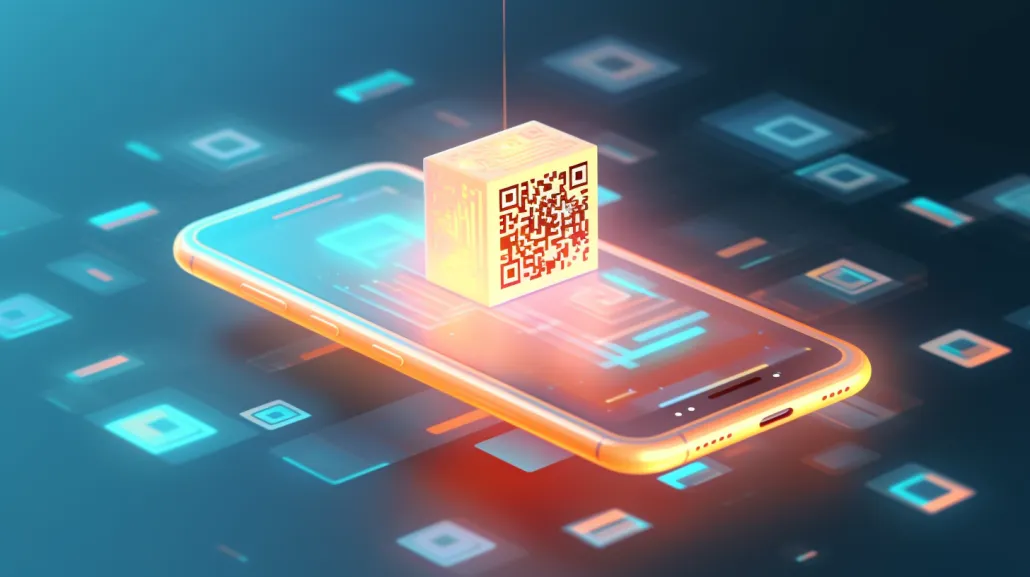Step into the world of web3 and you’ll quickly discover that token gating is a powerful access control mechanism that secures digital assets, creates exclusivity, fosters online communities, and rewards token holders. Though it may be vulnerable to replay attacks and require some configuration finesse, the benefits of token gating far outweigh the limitations, making it an essential tool for any savvy marketer. While other access control methods are also critical in safeguarding data, token gating reigns supreme in digital asset environments. With access control methods being the backbone of security, it’s important to consider token gating as the most efficient and effective solution to restrict content and data access.
What is token gating?
Token gating is a verification method that enables creators, business owners, or communities to provide exclusive access to spaces, events, content, communities, gated content, goods, and services to individuals who own specific digital assets in their wallets.
This access control mechanism can be utilized to grant digital or physical access to a wide range of exclusive digital content,, clubs, events, tickets, software, merch, crypto wallet airdrops, and much more. The possibilities are endless, as virtually anything under the Web3 sun can be configured to require token-based transactions.
How does token gating work?
Token gating is an access control method used in digital wallet security, to ensure that only authorized users can access gated areas. Token gating platforms employ a unique mechanism that checks the contents of a user’s digital wallet to determine if they are the owner of a specific asset. Once a visitor’s ownership is verified, the owner is then able to access the gated areas.

Advantages of Using a Token Gating platform
Token gating is a crucial component of web3 marketing strategies, as it offers an unparalleled method for solidifying and nurturing a sense of community among token holders. By granting exclusive access to content, services, or experiences, token gating creates an environment where holders feel valued and connected.
This fosters loyalty and engagement, ultimately contributing to the growth and success of a web3-based platform. In essence, token gating serves as a powerful tool for businesses to differentiate themselves, establish a strong brand presence, and cultivate lasting relationships with their audience.
- Exclusivity:
One of the primary advantages of token gating is that it creates exclusivity for token holders. By using token gating, project creators can grant access to content, events, and merch exclusively to token holders. This benefits both creators and token holders. Creators have greater control over who can access their community’s products and content, while token holders benefit from preferential access based on their level of support. - Community Building:
Another advantage of token gating is that it strengthens the community among token holders. By providing access to token holders-only communication channels on multiple platforms (like token gating Discord platforms – with Collab Land for example) and access to exclusive content, like Alchemy University’s free Ethereum Developer Bootcamp. Token gating allows holders to congregate and develop a sense of community.
An example of effective community-building with token gating is VeeCon. VeeCon is a multi-day mega-conference hosted by GaryVee, which is only accessible to VeeFriends token holders. Every VeeFriend holder has airdropped a unique VeeCon ticket that they can use to visit the conference or sell on the open market. - Rewards for Holders:
Token gating also allows token holders to access special rewards. For instance, token holders can receive exclusive merch or acquire entrance into special festivals and events.
An example of token holder rewards is Lyrical Lemonade, a Chicago-based multimedia giant. Lyrical Lemonade launched its tokens owned a tech subsidiary, L3mon, which spearheaded its first-ever NFT token drop, The Carton NFT Collection. There are only 500 holders of this required NFT collection, and holders of Carton NFTs get three years of access to Lyrical Lemonade’s Summer Smash festival. Tickets are airdropped to all holders.
Disadvantages of Token Gating
While token gating has several advantages, it is essential to consider its potential limitations and drawbacks before implementing it in an organization. In this section, we will discuss some of the main challenges of token gating and how they can be addressed.
- Complexity and Configuration:
One of the main challenges of token gating on blockchain networks is its complexity. Token gating requires a significant amount of configuration and management, which can be time-consuming and challenging for organizations with limited resources or expertise in this area. However, this challenge can be addressed by using a user-friendly token-gating platform that simplifies the configuration process and provides comprehensive documentation and support. - Limited Granularity:
Token gating may not provide granular control over individual user actions, which may limit its ability to detect and prevent unauthorized access. However, this limitation can be addressed by combining token gating with other access control methods, such as role-based access control (RBAC) or attribute-based access control (ABAC), to provide fine-grained authorization policies and mitigate the risk of unauthorized access. - Replay Attacks:
Another potential challenge of token gating is that it may be susceptible to replay attacks, where an attacker uses a valid token to gain unauthorized access to the protected resources. However, this challenge can be addressed by using both token gating runs and name-based authentication protocols that incorporate features such as token expiration time, nonces, and cryptographic signing, to prevent replay attacks and ensure the integrity of the token-gated authentication process. - Additional Costs and Complexity:
Finally, token gating may introduce additional costs and complexity for organizations, such as dedicated hardware, software, and personnel to manage and maintain the system, and additional training for users and administrators to understand how token gating work and its functionality and limitations. However, these challenges can be addressed by choosing a cost-effective and scalable token gating platform, leveraging cloud-based solutions, and providing comprehensive training and documentation on token-gated experiences to users and administrators.
Other Access Control Methods
Access control methods are essential for protecting sensitive data and information. Token gating is one such method that has only gained attention in recent years. However, other access control methods are commonly used and not web3 related, such as Role-based Access Control (RBAC), Mandatory Access Control (MAC), Discretionary Access Control (DAC), and Attribute-based Access Control (ABAC).
The purpose of access control methods is to ensure that only authorized individuals or groups can access specific resources or data. In simpler terms, access control methods are like a bouncer outside a club, checking IDs to ensure that only those with permission can enter. The following sections will provide a brief overview of each access control method and its unique features.
- Role-Based Access Control (RBAC):
In RBAC, access control access is granted based only on an individual’s position or role in an organization. This means that people with the same position or role have the same access rights. For example, in a company, all employees in the marketing department would have access to marketing data and files, but not to accounting data and files. This makes it easier for organizations to manage access control, especially in large organizations with many employees. - Mandatory Access Control (MAC):
In the MAC model, the owner and custodian of the access controls are the only ones who can manage them. This means that end-users have no control over any settings that provide access privileges to anyone. For example, in a hospital, a doctor may be able to access patient records, but not modify them. This is to ensure that only authorized personnel have access to sensitive information and to prevent unauthorized modifications. - Discretionary Access Control (DAC):
DAC is the least restrictive access control model. It allows an individual complete control over any objects they own along with the programs associated with those objects. For example, a freelancer who works from home may have complete control over their computer and files. This type of access control method is ideal for small businesses or home networks, where ease of access is prioritized over security. - Attribute-Based Access Control (ABAC):
ABAC is a more flexible access control method than the other models discussed. It allows access control decisions to be made based on various attributes, such as user attributes, resource attributes, or environmental attributes. For example, a user may be granted access to a resource only during specific hours of the day. This type of access control is commonly used in complex organizations or government institutions.

Token Gating vs Other Access Control Methods: A Comparison
In the new world of Web3, access control is crucial to ensure that only authorized individuals or groups can access specific resources or data, after all, we are talking about the new ownership economy. One of the methods used in access control is token gating, which requires token holders to have a specific token to access certain resources or participate in a specific something user holds the community together.
However, token gating benefits as every access control method has its advantages and disadvantages when compared to the rest access control methods.
Exclusivity and Community Building:
Token gating, as an access control method, creates a sense of exclusivity among token holders and reinforces community building within a particular ecosystem or community. The sense of belonging and shared interest among the token-gated benefits of holders fosters loyalty and commitment to the community.
Moreover, token gating allows for the governance of the community, making it decentralized and autonomous. This is because the token-gated community of holders has a say in decision-making processes and can vote on proposals related to the community. In contrast, other access control methods such as RBAC only grant access based on predefined roles but do not foster a sense of community among users. This limits the level of engagement and participation of users within the community.
Access Granularity:
Token gating can be limited in its ability to grant access to specific resources or data within a space or community. Token gating only allows access to token holders, and if there are multiple levels of access required, it may need multiple tokens. This limitation can be a drawback for certain use cases that require more fine-grained access control.
In contrast, other access control methods like mandatory access control (MAC) offer more precise control over access. MAC and token gating works together by granting access based on predefined labels or tags, allowing for more granularity in access control. This level of control can be advantageous in environments where access to specific resources or data needs to be strictly managed.
Complexity:
Implementing token gating mechanisms can be a complex task as it involves developing a smart contract that specifies the token’s features and its relationship with the community. This process requires proficiency in blockchain technology and smart contract development, making it a difficult and time-consuming task. Developing a smart contract requires careful consideration of the token’s properties and its interactions with the community.
On the other hand, other access control methods like discretionary access control (DAC) are relatively simpler to implement and manage. With DAC, the owner of a resource can set access control rules without the need for complex smart contracts. This makes DAC a more accessible option for individuals and organizations without extensive knowledge of blockchain technology and smart contract development.
Vulnerability to Attacks:
While token gating is effective in creating exclusivity and strengthening community building among token holders, it may also be vulnerable to replay attacks. In these attacks, an attacker can use a recorded token to gain unauthorized access, which can be difficult to detect. On the other hand, other access control methods such as multi-factor authentication (MFA) may be less vulnerable to these types of attacks.
MFA requires the user to provide multiple forms of identification, making it harder for attackers to gain unauthorized access. However, it’s important to note that the vulnerability to replay attacks and other cyber threats can vary depending on the system structure and the specific implementation of access control methods.
Cost:
Token gating, as an access control method, has some drawbacks that make it more costly and complex than other options. The implementation of token gating requires blockchain technology and the development of smart contracts, which can be expensive. In addition, ongoing maintenance can also be costly, as smart contracts require regular updates and monitoring.
In contrast, other access control methods like RBAC only require defining roles and permissions, which is a simpler and less expensive process. Therefore, organizations that prioritize cost-effectiveness may prefer RBAC or other access control methods that are less complex and expensive to implement and manage.
Flexibility:
Token gating has a limitation in accommodating changing access control needs or requirements. This is because it necessitates creating a new token for each level of access, and if the community needs to change access levels, it may require creating new tokens or modifying the smart contract, that’s off-course directly related to the way the token gating mechanism works and the token gating platform structured.
Other access control methods offer more flexibility in this regard. For instance, attribute-based access control (ABAC) enables the community to define and restrict access based on attributes that can change over time. This means that the access control policies can be more easily modified as the needs of the community evolve without the need to create new tokens or modify the smart contract address or contracts. Therefore, ABAC is a more flexible access control method than token gating.
Use Cases:
Token gating is a valuable tool for use cases where exclusivity and community building are important. For instance, in blockchain-based ecosystems or decentralized autonomous organizations (DAOs), where the involvement and participation of token holders are essential, token gating can promote a sense of ownership and belong to the community.
With token gating, only those who hold a certain amount or type of tokens can gain access to certain resources, activities, or decision-making processes, which strengthens the community’s sense of exclusivity and belonging. Additionally, this exclusivity can lead to better decision-making and governance since only those who are invested in the community are allowed to participate in the decision-making process.
However, other access control methods may be better suited for different use cases, such as role-based access control (RBAC) in corporate environments, or mandatory access control (MAC) in military or government settings. In these scenarios, security and confidentiality are the primary concerns, and fine-grained control over access is required to prevent unauthorized access to sensitive information or resources.






